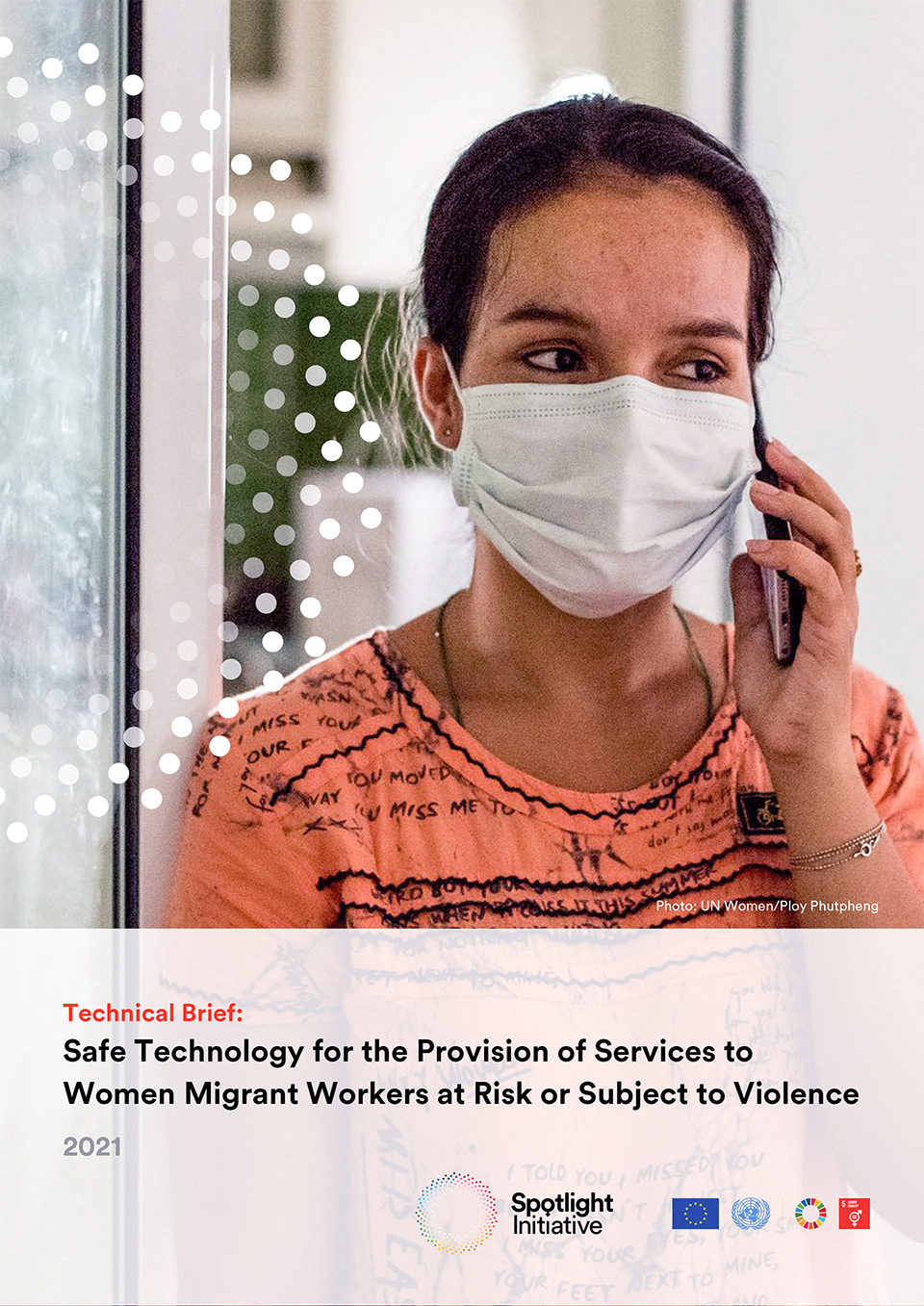
Safe Technology for the Provision of Services to Women Migrant Workers at Risk of or Subject to Violence

This note provides guidance on the safe use of remote technologies to provide support to women migrant workers who are at risk of, or have experienced violence, harassment, abuse or exploitation. The provision of services through remote technologies is not new. However, various remote methods are increasingly being used as technological innovations evolve and they become more accessible. The COVID-19 pandemic and the measures to contain it have also prompted many service providers to either shift to, or augment, remote service delivery. Technologies are diverse in how they are designed, developed and function and may include: land and mobile phone lines, SMS/text-based systems, online chat functions, chatbots, and video-related interfaces among other systems and apps. This note is adapted from various sources that have explored the use of these technologies for the specific purposes of communicating with survivors of violence. It is intended to provide guidance to service providers on how to safely employ technologies based on current knowledge with examples from different countries and contexts. This brief should be read in tandem with the brief on Remote Service Provision for Women Migrant Workers at Risk or Subject to Violence.
This Technical Brief was developed as part of the Safe and Fair Programme: Realizing women migrant workers’ rights and opportunities in the ASEAN region (2018–2022). Safe and Fair is part of the multi-year EU-UN Spotlight Initiative to Eliminate Violence Against Women and Girls, funded by the European Union, and is implemented by ILO and UN Women in collaboration with UNODC. It delivers technical assistance and support with the overall objective of making labour migration safe and fair for all women in the ASEAN region.